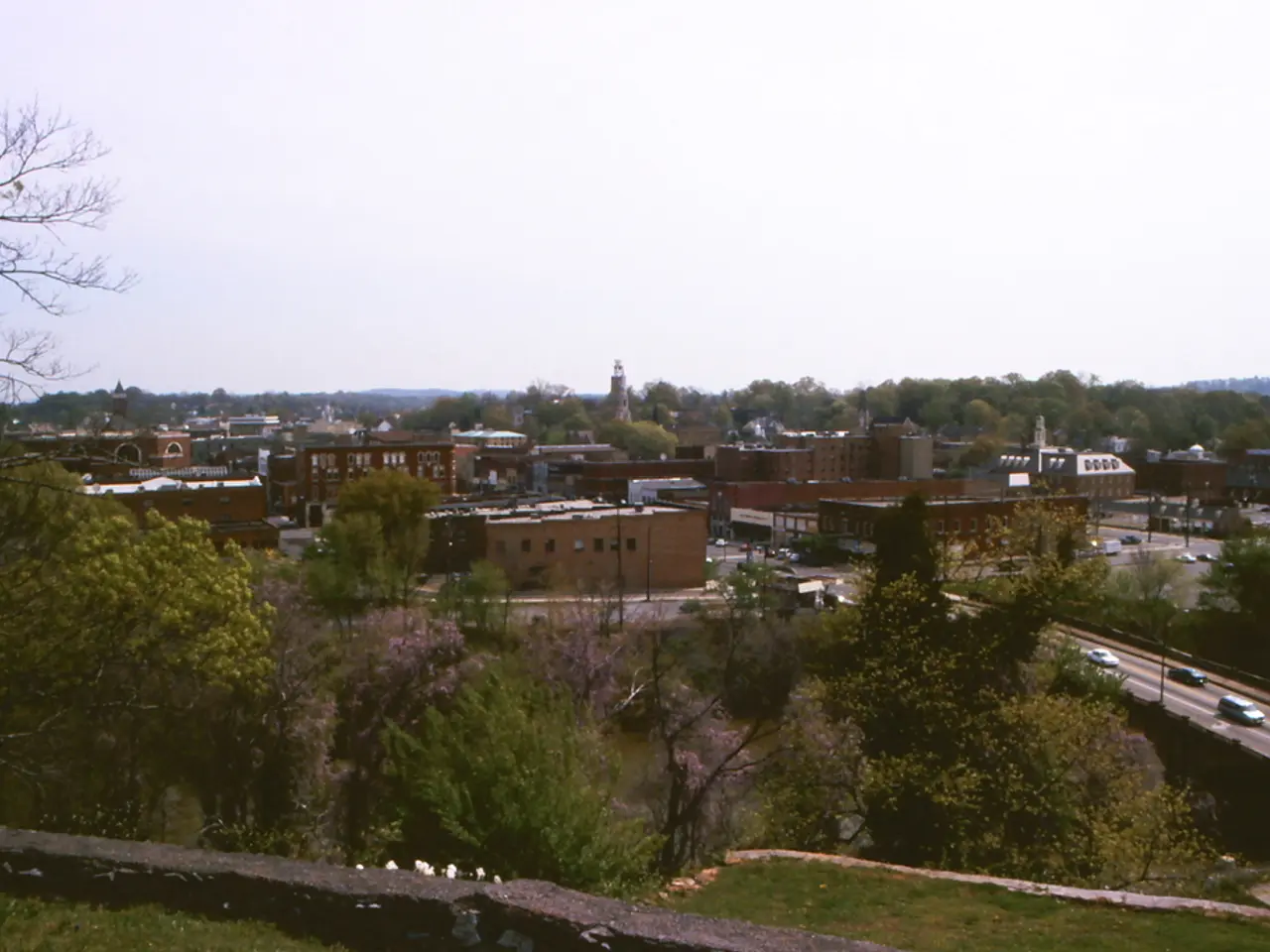precautions for cyclists to ensure safety while pedaling through national parks on highways
Cycling through the picturesque landscapes of national parks can be an unforgettable experience, but it's crucial to prioritise safety to ensure a memorable journey. Here are some essential safety tips to help you navigate the parks responsibly and enjoy the ride.
Equipment is the first line of defence when it comes to safety. Wearing a well-fitted helmet is not only often legally required, but it also offers the best protection against head injuries. Choosing a bike with good suspension and suitable tires for rough or varied park terrain is also important. Carrying water, snacks, basic bike tools, and a first aid kit, especially in remote areas where assistance may be limited, is a must. To enhance visibility, equip your bike with front (white) and rear (red) lights and wear bright or reflective clothing, especially in variable lighting or weather conditions typical of national parks.
Riding skills and behaviour play a significant role in safety. Ride with control and be courteous to other park users such as walkers, runners, and horses. Yield where appropriate, and avoid distractions. Know your bike well, including how to perform basic repairs if needed. Ride single-file on roads to stay safe and not impede motor vehicles or other cyclists. Use clear hand signals for turns and stops to communicate intentions to others.
Adhering to traffic rules is vital when cycling in national parks. Follow all traffic laws applicable within the park, including riding with the flow of traffic on one-way roads. When crossing roads, stop and yield to traffic. Stay on designated bike paths or roads and avoid cycling off marked trails to prevent environmental damage and possible legal issues. Obey posted signs and signals, including restrictions on bike use on certain roads or times.
Staying aware of your surroundings is key to avoiding accidents. Stay alert to vehicles, other cyclists, pedestrians, and wildlife. Be mindful of the environment—avoid disturbing wildlife or sensitive natural features when cycling on trails. Keep aware of weather changes and plan accordingly as conditions can shift quickly, especially in mountainous or remote parks.
Regular maintenance of your bicycle is essential to ensure safety and performance on the road. Perform regular checks on your bike before rides: ensure tires are properly inflated, brakes work effectively, and the chain is clean and greased. Address any mechanical issues promptly or visit a local bike mechanic if unsure about the bike's condition. Keeping your bike in good repair reduces the risk of accidents due to equipment failure while cycling in remote or challenging park terrain.
By integrating these safety practices—using right equipment, riding skillfully and legally, staying aware of your environment, and maintaining your bike—you can enjoy cycling in national parks safely and responsibly. Wearing a certified helmet can significantly reduce the risk of head injuries in case of an accident. Mastering essential cycling skills, such as making quick stops and swerves, is crucial for safety. Adopting a defensive riding approach can minimise risks. Practising in a safe environment, like an empty parking lot, can help build confidence. Regularly checking your bike for necessary repairs or replacements, such as brake pads and tires, is important. Avoid using headphones while cycling, as they can distract you from auditory cues like honking horns or approaching vehicles.
Always riding in the same direction as traffic and following all road signs and signals helps create a predictable flow of movement. Cyclists have the same rights and responsibilities as motorists, which means adhering to traffic rules is vital. Staying vigilant and continuously scanning your environment for potential hazards is key to avoiding accidents. Maintain a safe distance from motor vehicles and avoid riding in blind spots. Keeping your chain and gears clean and properly lubricated is another crucial aspect of bike maintenance. Bright and reflective clothing increases cyclist visibility, especially in low-light conditions. Signal your intentions clearly and make eye contact with drivers when possible. Always assume that drivers may not see you, especially at intersections and turns.
Familiarising yourself with local cycling laws is important, as they can vary and ensure safety and harmonious road usage. Consulting with a cyclist attorney can provide information about rights and responsibilities as a cyclist. Prioritising awareness can significantly enhance your road safety. Using mirrors or regularly glancing over your shoulder helps you stay informed about the traffic behind you. Maintaining a safe distance from other vehicles is important. Maintaining a steady balance and mastering hand signals are essential for communicating with other road users.
By following these tips, you can ensure a safe and enjoyable cycling experience in national parks. Happy trails!
- Wearing a well-fitted helmet offers the best protection against head injuries while cycling through national parks and is often legally required.
- Choosing a bike with good suspension and suitable tires for rough or varied park terrain is vital for safety as you travel.
- Carrying water, snacks, basic bike tools, and a first aid kit, especially in remote areas, is essential for navigating the parks responsibly.
- To enhance visibility, equip your bike with front (white) and rear (red) lights and wear bright or reflective clothing in variable lighting or weather conditions.
- Riding with control, being courteous to other park users, and avoiding distractions can help ensure a safe journey in national parks.
- Knowing your bike well and performing basic repairs if needed can help you manage any potential problems while cycling in the parks.
- Ride single-file on roads to stay safe, not impede motor vehicles or other cyclists, and communicate intentions to others using clear hand signals for turns and stops.
- Adhering to traffic laws applicable within the park, staying on designated bike paths or roads, and obeying posted signs and signals can help prevent environmental damage and legal issues.




